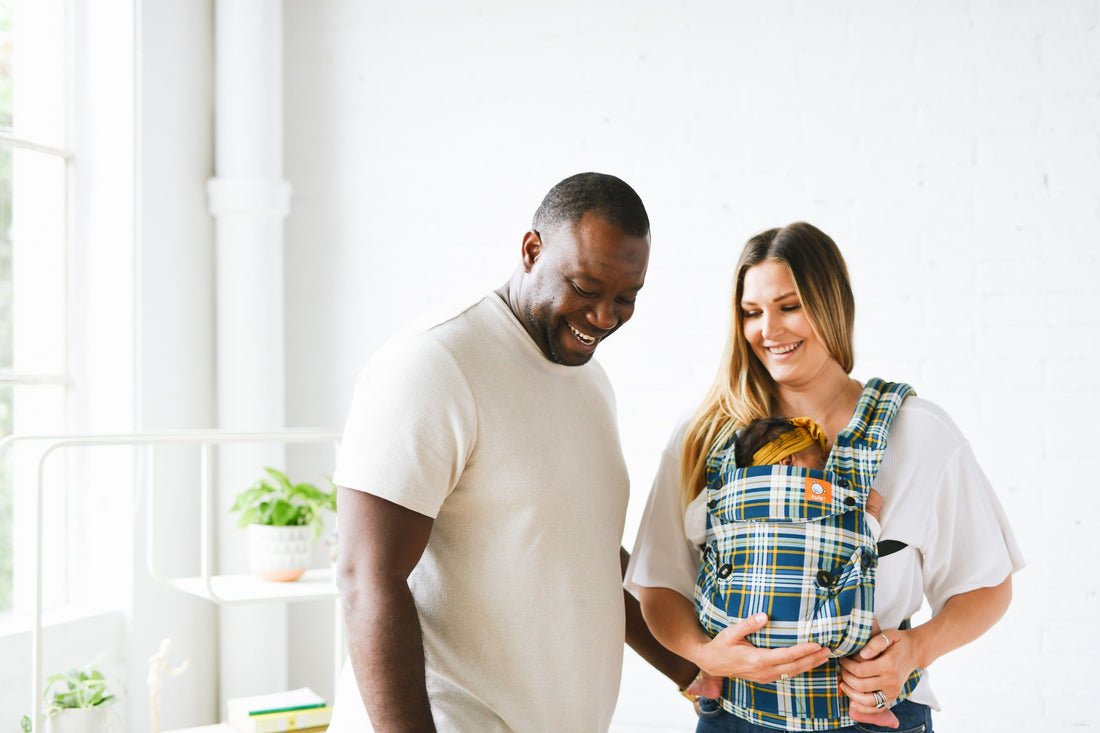
When you're welcoming a new baby or just learning about your Tula baby carrier, making sure that baby is safe while in a baby carrier is essential to becoming a confident and secure parent. Yet, we often hear that new parents aren't always sure they are carrying their baby properly. Luckily, there is a simple solution to helping you remember basic safety steps for babywearing.
T.I.C.K.S is an acronym that can help you recall positioning checkpoints while baby is in your Tula Carrier or Sling. These checkpoints are especially important in the newborn phase when your baby has minimal head and neck control. But, it’s helpful to keep T.I.C.K.S in mind whenever you’re carrying your little one.
T- TIGHT
Your baby carrier or sling should be worn snug against you to securely hold your baby. We often use the phrase “snug hug” to describe how your baby should be held in your carrier. A comfortably tight carrier will allow you and baby to move as one which will prevent unnecessary shifting or slumping of the baby. This will also help avoid additional pressure on your body.
I - IN VIEW AT ALL TIMES
While baby is your carrier, you should always be able to see their face and easily check-in to avoid any airway obstructions or issues. Ensure that there isn’t any fabric from your clothes, carrier, or anything else that is completely covering your baby’s face. Frequent check-ins help you and baby stay in tune.

C - CLOSE ENOUGH TO KISS
A quick way to check that your baby is positioned high enough on your torso is to tip your head down and give them a kiss. While in your carrier or sling, you should be able to kiss the top of your baby’s head while they are being held in the carrier. If your baby is too low, then you likely need to wear your waistband higher on your body.
K - KEEP CHIN OFF CHEST
A major concern that can cause an obstructed airway is if your baby is slumping over. You should be able to get two fingers width between your baby’s chin and chest to keep them in optimal positioning for carrying. With their chin off of their chest, your baby will have a clear airway and can rest and relax in your carrier or sling.

S - SUPPORTED BACK
If your carrier is snug, baby’s back will be supported in its natural ergonomic positioning. An unsupported back may allow for movement or slumping. This is also where that “snug hug” fit comes in handy. The panel or fabric of your carrier should keep baby snug up against you in all positions.
As you prepare to head out the door, remember T.I.C.K.S along with our carrier instructions to keep baby safe while you bond. You can find additional video tutorials on our YouTube channel, as well. Happy Babywearing!


